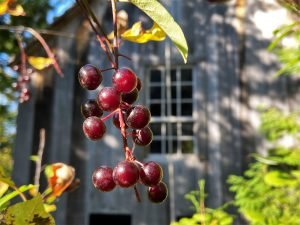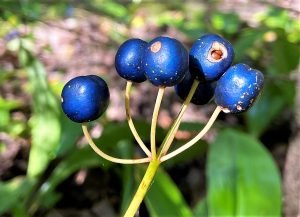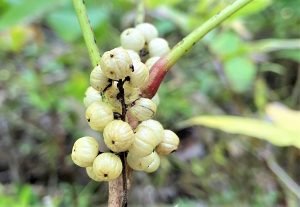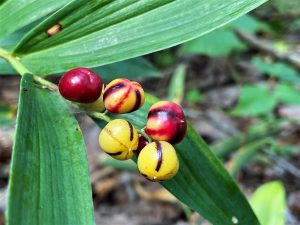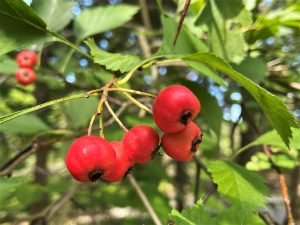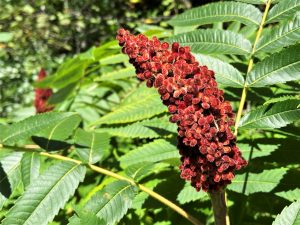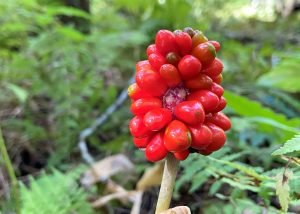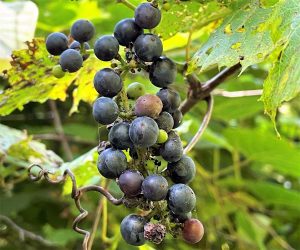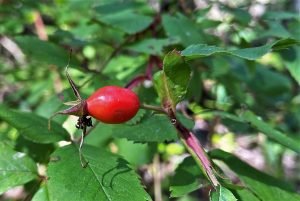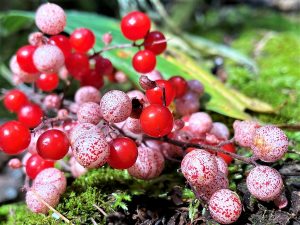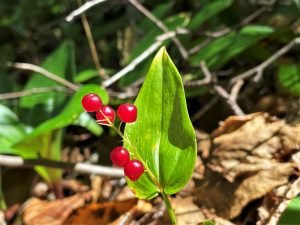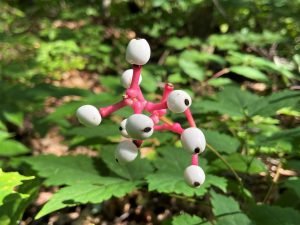“On the 20th of September [1835] the snow fell one inch, with quite a severe frost. The bushes were still loaded with whortleberries.” – Benjamin O. Williams
In late September 1835, Lieutenant Benjamin Poole was completing an arduous months-long survey for the U.S. Army Corps of Topographical Engineers. His crew’s mission was to survey a proposed military road from Saginaw to Mackinac, with a terminus at Dousman’s Mill.
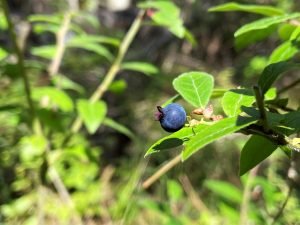

Poole’s survey crew was guided by brothers Benjamin O. and Alpheus F. Williams on a route “through a trackless wilderness nearly two hundred miles in extent, about which nothing was known, but that it presented obstacles of an unusually formidable character.” In short, the crew encountered long stretches of cedar swamps, shaking bogs, and alder thickets, ran out of provisions, and nearly starved. In his official report, written at Detroit on September 30, 1835, Poole admitted, “The assistants were frequently employed for days, and even weeks, in creeping through thickets and windfalls, where walking was quite out of the question.”
Much of what isn’t included in the official report was later recalled by B.O. Williams in a vivid account read before the Michigan Pioneer Society in February 1878. He wrote, “The density of some portions of the spruce, fir, and cedar lands exceeded any tropical forest I have ever seen…” His account follows their crew as they trek through the wilderness in moccasined feet, enduring swarms of gnats and mosquitoes, suffering illness and injury, and were saved from near starvation after stumbling upon “whortleberries [bilberries or blueberries] in great abundance.” Thankfully, shaking bogs and cedar swamps are excellent places to find many species of wild berries. Yet too much of a good thing caused a different digestive dilemma, as Williams noted, “eating whortleberries had affected some of the men unfavorably.”
As flowering plants bear fruit in early autumn, many species of wild berries ripen, each containing seeds to perpetuate a new generation of plants. While some berries are edible by people, others are inedible or even toxic to humans. Instead, most are best enjoyed with a photograph and left to the birds, squirrels, and other creatures of the north woods as they prepare to migrate south or endure the long, cold months of winter. The berries that follow were all photographed along the trails at Dousman’s Mill.
